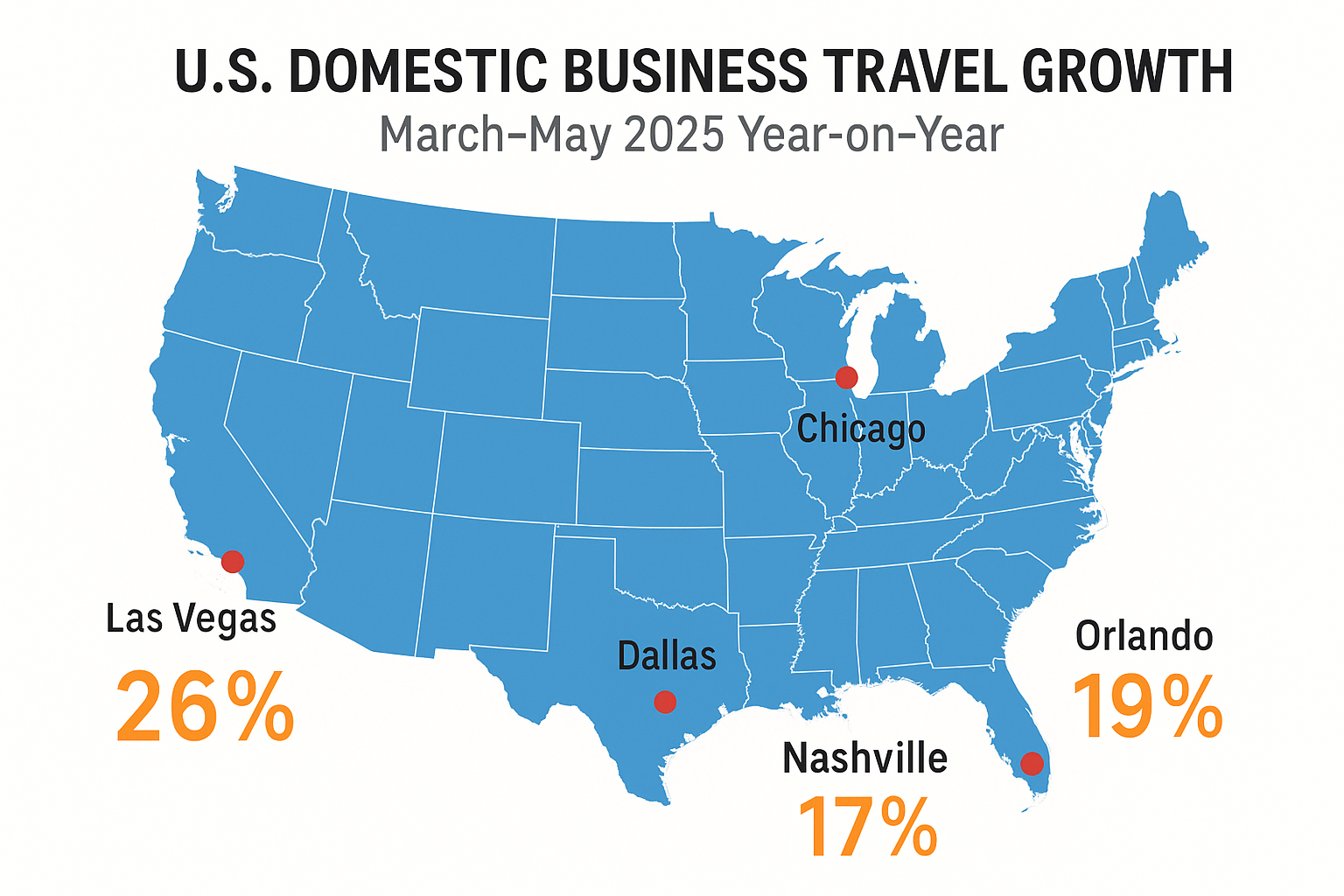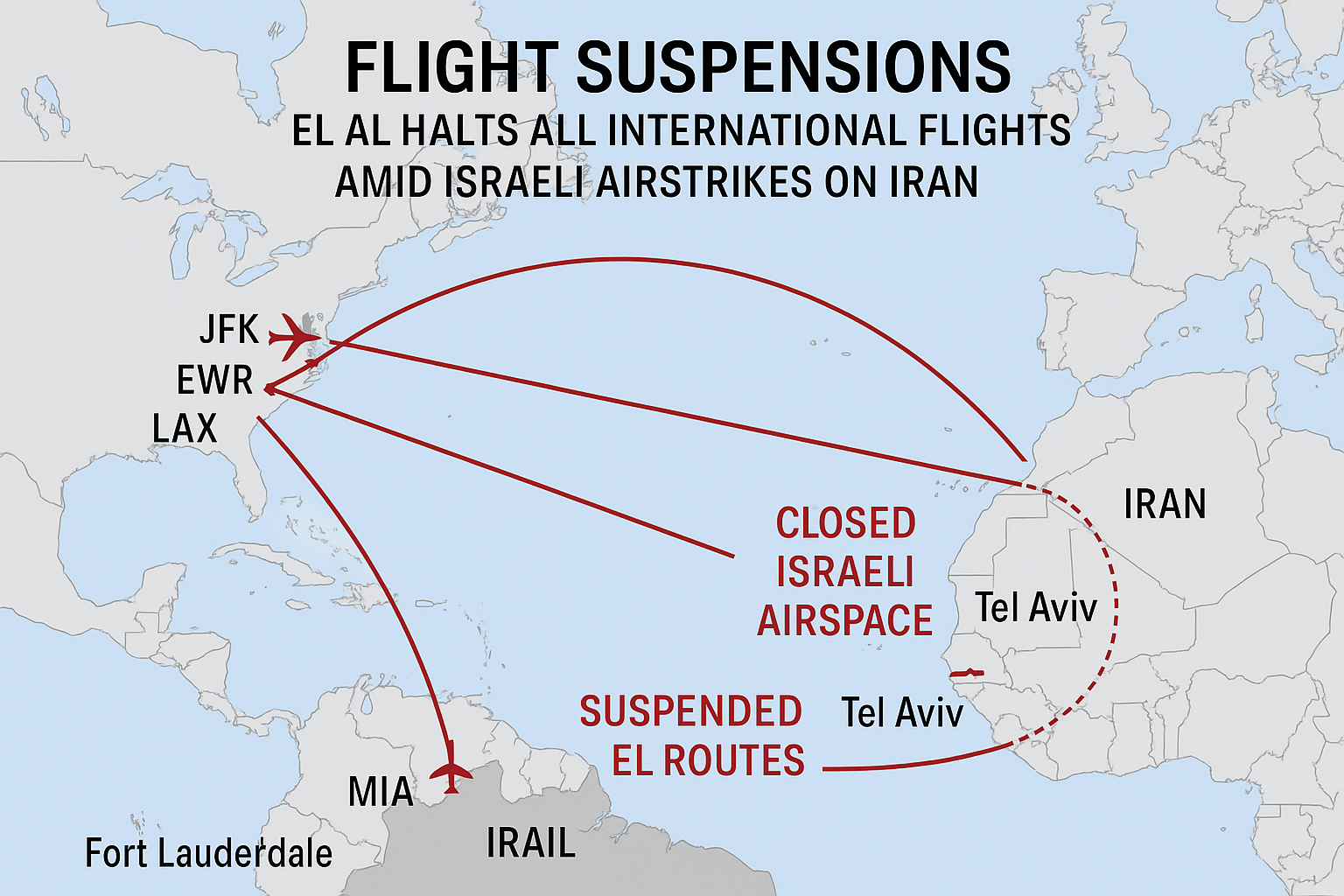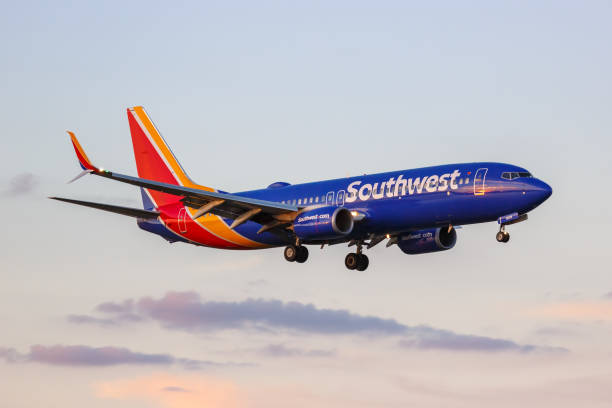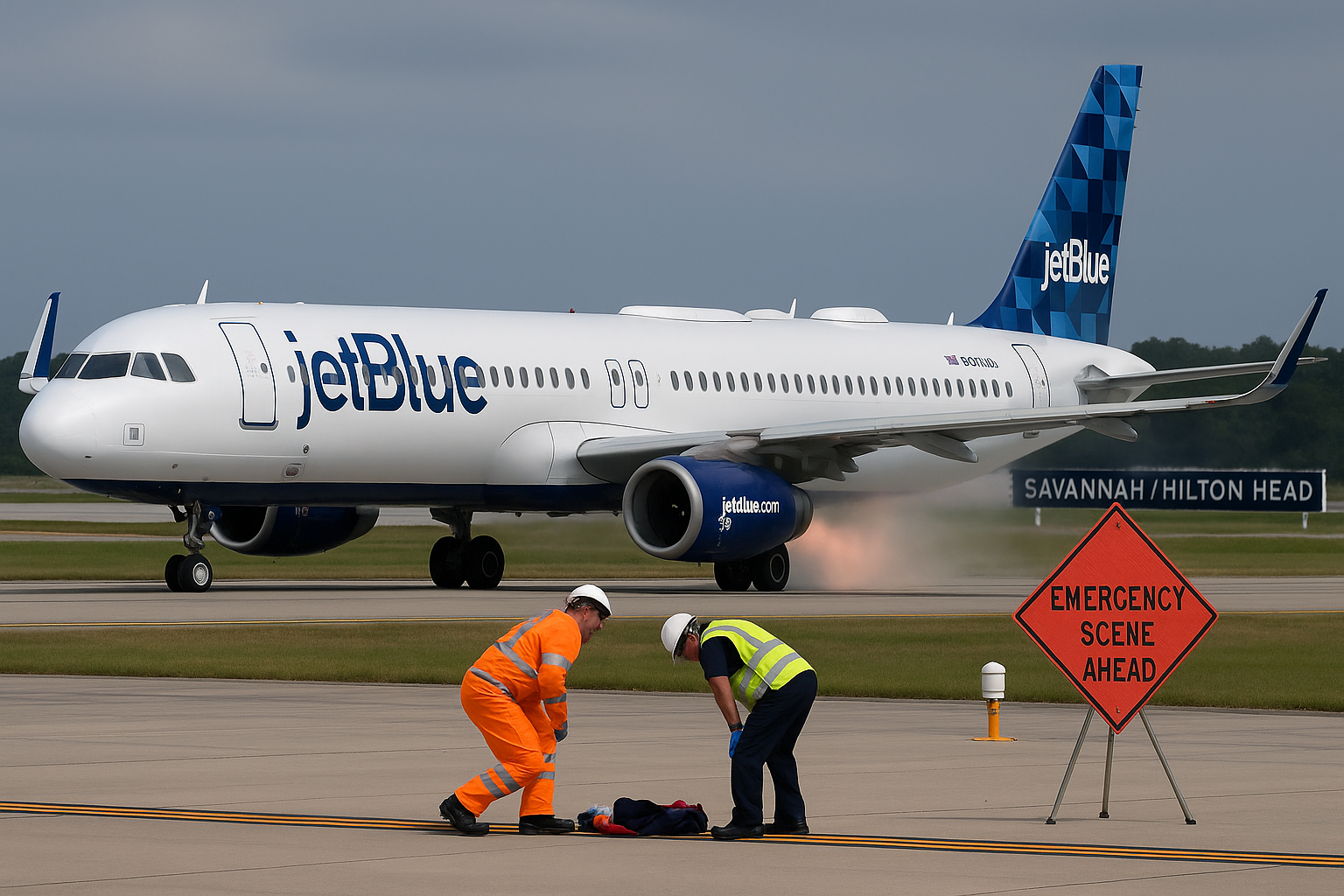Savannah, Georgia — June 15, 2025 — The Federal Aviation Administration (FAA) has launched an official investigation after a JetBlue Airways (B6) Airbus A321 emitted a powerful engine jet blast that injured two ground crew members at Savannah/Hilton Head International Airport (SAV) on June 9, 2025. The aircraft was preparing for departure as Flight JBU650, bound for John F. Kennedy International Airport in New York, when the incident occurred near the Runway End Identifier Light (REIL) system.
According to preliminary findings from the FAA, the engine blast from the aircraft’s IAE V2533-A5 engine struck two airport personnel operating near the REIL system at around 15:19 UTC (11:19 AM local time). Both workers sustained minor injuries and received prompt emergency medical attention on site. The 9.5-year-old Airbus A321, registered as N959JB, remained undamaged and continued its operations following a safety clearance.
While the incident did not result in any harm to passengers or crew onboard, it has reignited concerns about runway safety zones and the protection of ground personnel during aircraft pushback and taxi procedures.
FAA Classifies Event as ‘Incident,’ Not Accident
The FAA classified the occurrence as an “incident” under its aviation regulations, noting that no fatalities or significant damage to the aircraft were reported. Oversight of the investigation has been delegated to the Atlanta Flight Standards District Office (FSDO), which will coordinate with JetBlue and the airport’s ground operations team to determine whether operational safety protocols were followed.
Airport authorities are also expected to examine the layout and positioning of REIL maintenance operations in proximity to active jet runways, to prevent similar accidents from recurring.
JetBlue Responds: Reaffirms Commitment to Safety
In response to the Savannah incident, JetBlue Airways issued a brief public statement emphasizing that “the safety of our crew, customers, and airport partners remains our top priority.” The airline confirmed it is fully cooperating with FAA investigators and is conducting its own internal review of ground handling procedures at Savannah/Hilton Head International Airport.
JetBlue further added that routine operations resumed shortly after the event and the airline has since implemented additional safety briefings for ground teams operating near high-thrust aircraft zones.
A Pattern of Safety Incidents: Recent JetBlue Operational Events
This latest runway event in Savannah is part of a growing list of recent aviation safety events involving JetBlue Airways. Just three days after the Savannah incident, on June 12, 2025, JetBlue Flight 312 arriving at Boston Logan International Airport (BOS) from Chicago O’Hare (ORD) veered off the taxiway and came to rest on a grassy shoulder.
Although there were no injuries reported and the Airbus A220, delivered in early 2024, sustained no damage, the FAA launched another investigation. The aircraft was towed, and all passengers disembarked via mobile stairs. Massport, the agency managing Logan Airport, temporarily closed the runway to assess conditions.
JetBlue, in its public response, reiterated its collaboration with regulatory authorities and reassured passengers of its safety measures. The airline also indicated that mechanical issues were unlikely, given the aircraft’s newness.
Recap: Previous Tug Collision at Boston Logan
In a separate safety event last year, on November 25, 2024, a JetBlue tug vehicle collided with a Cape Air aircraft at Boston Logan International Airport. During routine towing of an Airbus A321, the vehicle accidentally made contact with a Cape Air Tecnam P2012 that had recently arrived from Nantucket Memorial Airport (ACK).
While passengers remained unharmed, two Cape Air pilots sustained minor injuries and were taken to a hospital for precautionary checks. The event prompted renewed calls for tighter ground coordination and communication between airline ground crews, especially during peak operating hours.
Industry Reactions: Safety Oversight Tightens
In light of these successive incidents, aviation industry experts and unions have called for intensified training for ground personnel and reevaluation of airport layout planning. Safety protocols, particularly during aircraft startup, pushback, and taxiing procedures, are now under heightened scrutiny by both federal regulators and commercial carriers.
The FAA has already begun reinforcing operational best practices through advisories to all domestic carriers and airport operators, citing the need to protect ground crew from unexpected engine blasts, tug vehicle misnavigation, and other mechanical hazards.
Savannah Airport and Community Response
Located just outside Savannah, Georgia, the Savannah/Hilton Head International Airport (SAV) serves as a key gateway for Southeast Georgia and South Carolina’s Lowcountry. It has seen increased activity in recent years, especially from low-cost and hybrid carriers such as JetBlue, making safety measures and operational discipline all the more crucial.
Airport officials noted that standard runway safety zones were in place but emphasized the importance of continuous review. “Every incident is an opportunity to improve our processes and reaffirm our commitment to the well-being of all airport personnel and travelers,” an SAV spokesperson said.
Conclusion
As the FAA and JetBlue continue to investigate the Savannah engine blast incident, the aviation sector is reminded once again of the importance of coordinated safety operations, clear communication, and rigorous training at all stages of aircraft preparation. While no passengers were harmed, the event underscores that behind-the-scenes personnel remain vulnerable unless proactive safety measures are constantly reviewed and enforced.

















